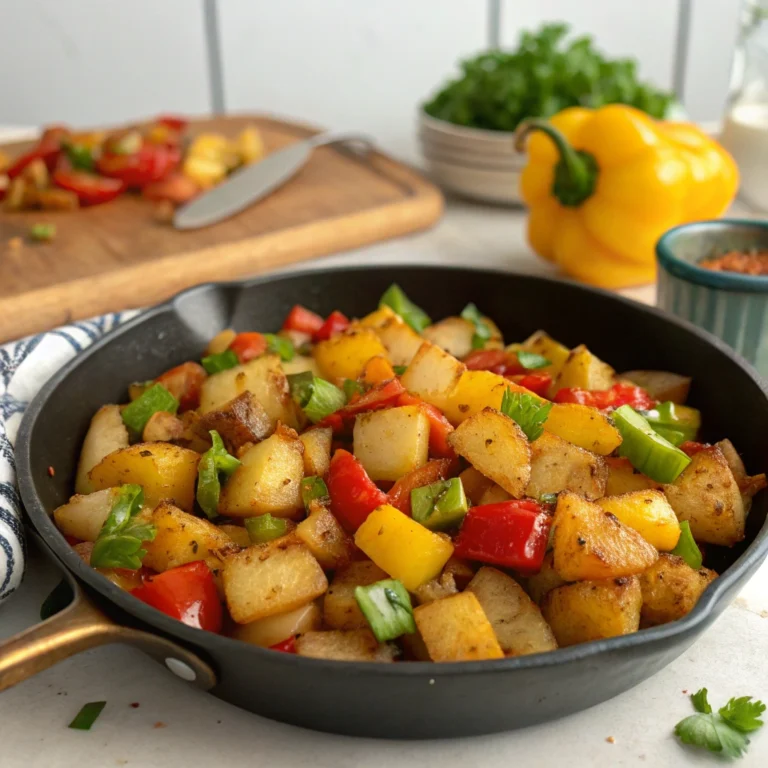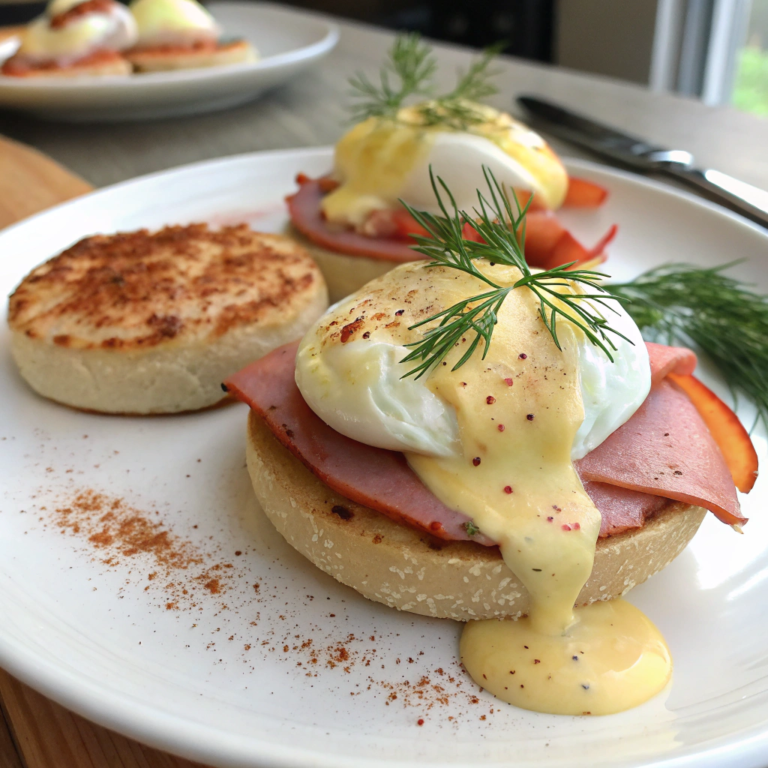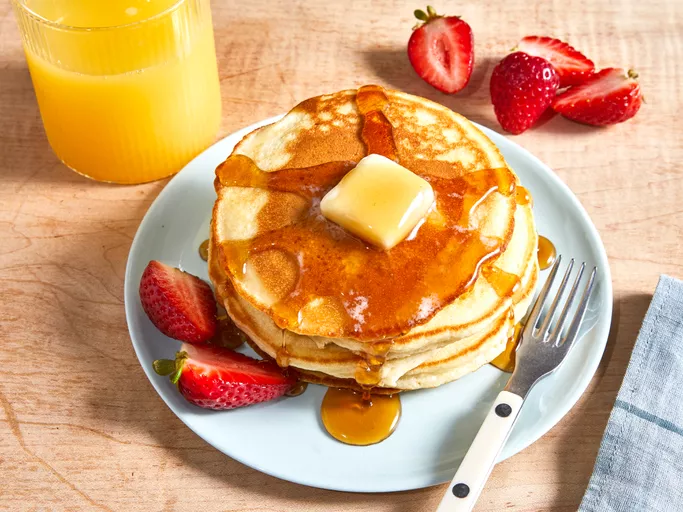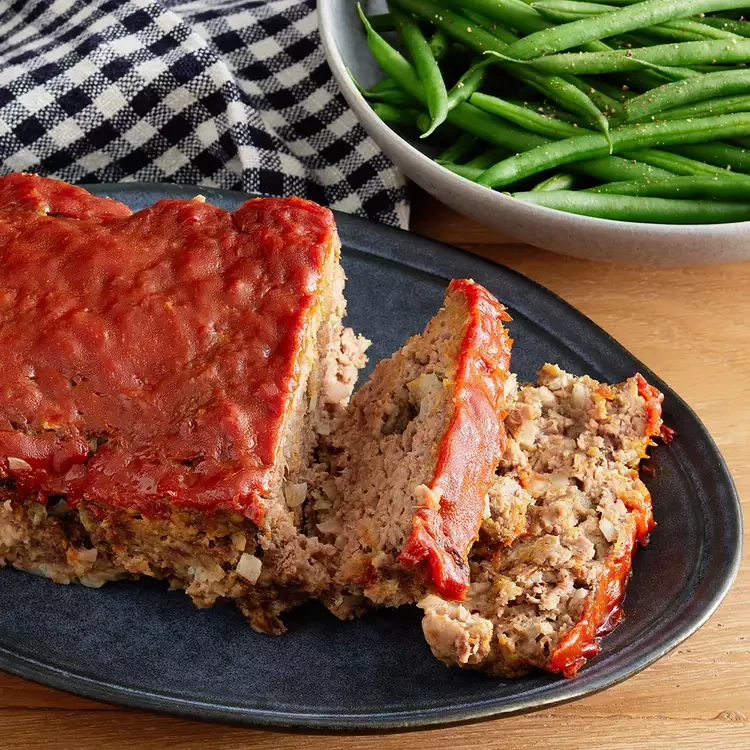Cloud Bread
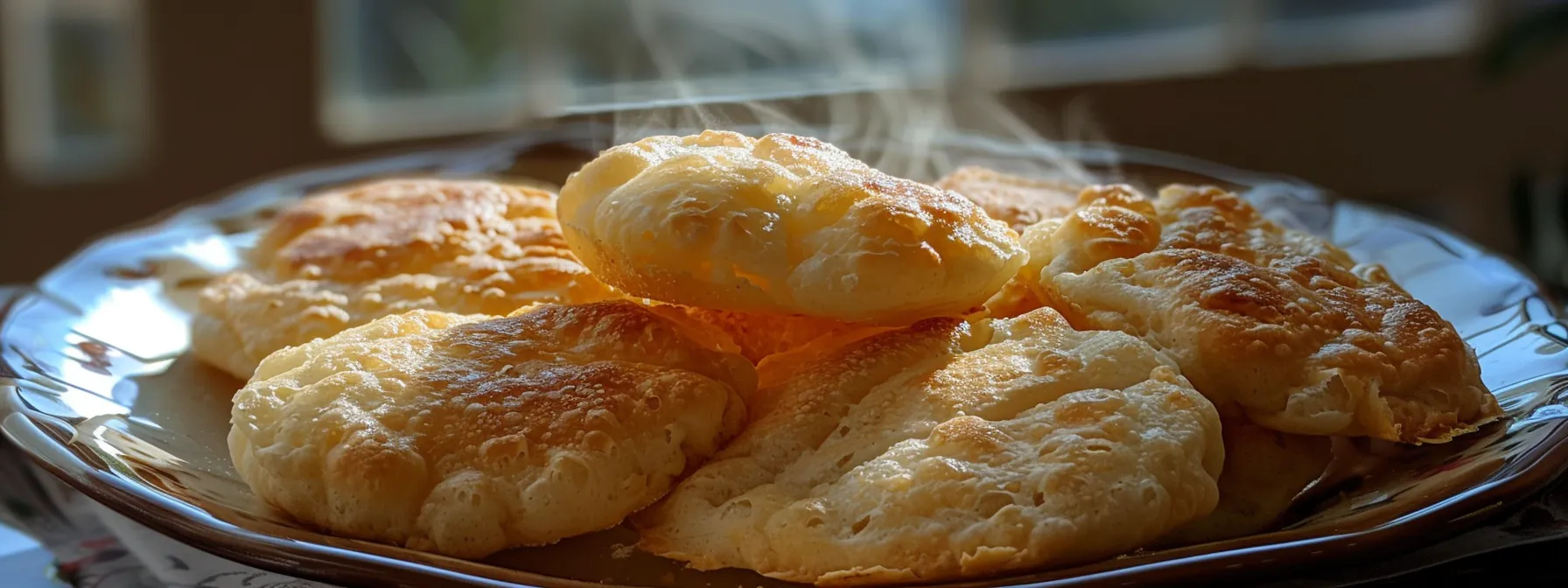
Table Of Contents:
- Easy 2-Ingredient Cloud Bread Recipe
- Key Takeaways
- Ingredients for Easy Cloud Bread
- How to Make Easy 2-Ingredient Cloud Bread
- Nutrition Facts of Easy Cloud Bread
- Tips for the Best Cloud Bread Recipe
- Creative Ways to Use Cloud Bread
- FAQs About Cloud Bread
- Reader Experiences and Comments
- Additional Resources for Easy Cloud Bread
- Frequently Asked Questions
- Conclusion
Easy 2-Ingredient Cloud Bread Recipe
Are you looking for a quick, low-carb bread alternative? Our Easy 2-Ingredient Cloud Bread Recipe is the answer. This simple recipe uses just eggs and cream cheese to create light, fluffy bread in minutes. You’ll learn how to make cloud bread, discover its nutritional benefits, and explore creative ways to use it in your meals. Whether you’re following a keto diet or just want a lighter bread option, this recipe will become your new go-to.
Key Takeaways
- Cloud bread is a versatile, low-carb alternative made primarily from eggs and cream cheese
- Proper whipping of egg whites and gentle folding are crucial for achieving the ideal texture
- Flavor variations and ingredient substitutions can customize cloud bread for different dietary needs and preferences
- It can be stored at room temperature for 2-3 days or frozen for up to a month
- Readers have shared creative recipes, including coconut-flavored muffins and protein-packed versions for post-workout snacks
Ingredients for Easy Cloud Bread
I’ll guide you through the essential ingredients for our low-carbohydrate, low-calorie cloud bread mixture. We’ll explore the key components in detail, recommend suitable equipment for preparation, and discuss potential substitutions. This versatile dish requires just two main ingredients, creating a light and fluffy result without added sugar.
Essential Ingredients in Detail
I’ve found that the key to perfect cloud bread lies in two simple ingredients: eggs and cream cheese. The eggs form the base of the meringue, which gives the bread its light, airy texture. For added flavor, I often incorporate a pinch of salt and some herbs or spices like onion powder.
While the basic recipe is delicious on its own, I love experimenting with variations. Sometimes I’ll add a touch of almond extract for a nutty flavor, or mix in some mashed sweet potato for a vibrant color and extra nutrients. These additions can transform the cloud bread into a versatile base for both sweet and savory dishes.
Recommended Equipment
I find that having the right equipment is crucial for making perfect bread. A convection oven is ideal for achieving an even bake, but a regular oven works well too. I always use a large mixing bowl for whisking the egg whites and a separate bowl for the yolk mixture. An electric mixer or stand mixer is essential for whipping the egg whites to stiff peaks efficiently.
For measuring ingredients accurately, I rely on a kitchen scale and measuring spoons. A silicone spatula helps me fold the mixtures together gently without deflating the egg whites. To add sweetness or create a french toast-like variation, I use a small whisk to incorporate arrowroot powder or mozzarella cheese. Here’s a summary of the essential equipment:
Suitable Substitutions
I’ve discovered that cloud bread’s versatility allows for various substitutions without compromising its nutritional value. For those seeking a dairy-free option, I recommend using coconut cream instead of cream cheese, which maintains the bread’s texture while adding a subtle tropical flavor. To enhance the flatbread’s vitamin content, I often incorporate nutrient-rich ingredients like spinach or sweet potato puree.
For a tangier flavor profile, I’ve found that adding a splash of vinegar to the egg whites helps stabilize the meringue and adds depth to the taste. To boost the polyunsaturated fat content, I sometimes replace a portion of the cream cheese with Greek yogurt or cottage cheese. Here’s a table summarizing some common substitutions I use:
How to Make Easy 2-Ingredient Cloud Bread
I’ll guide you through creating perfect cloud bread with my step-by-step instructions, mixing techniques for optimal texture, and baking guidelines. We’ll explore how to incorporate ingredients like syrup and cheddar cheese for flavor variations. I’ll share my cooking tips to boost iron content and how to finish with a dusting of powdered sugar for a sweet touch.
Step-by-Step Instructions
I begin by separating the eggs, placing the whites in one bowl and the yolks in another. Then, I beat the egg whites until stiff peaks form, usually taking about 2-3 minutes with an electric mixer. In the separate bowl, I mix the egg yolks with cream cheese until smooth. For added flavor, I often incorporate a pinch of onion powder or seeds like chia or peanut for texture.
Next, I gently fold the egg yolk mixture into the egg whites, being careful not to deflate the whites. I spoon the mixture onto a baking sheet lined with parchment paper, forming 6-8 circular shapes. Before baking, I sometimes sprinkle a light dusting of starch on top for a crispy texture. I bake the cloud bread at 300°F (150°C) for about 25-30 minutes until golden brown. These make an excellent low-carb side dish or base for sandwiches. Here’s a summary of the steps:
Mixing Techniques for Optimal Texture
I’ve found that the key to achieving the perfect texture in cloud bread lies in the careful handling of the egg whites. When beating the egg whites, I start at a low speed and gradually increase it, ensuring they reach stiff peaks without becoming overbeaten. This technique creates a stable structure that holds up well during baking, much like the fluffy texture you’d want in a chicken soup.
For incorporating the yolk mixture, I use a gentle folding motion with a silicone spatula. I cut through the center of the bowl, then sweep around the edges, similar to how I’d fold a delicate salad. This method preserves the air bubbles in the egg whites, resulting in a light, airy texture that’s perfect for grilling or topping with your favorite sauce.
Baking Guidelines
I’ve found that baking cloud bread requires precise temperature control for optimal results. I preheat my oven to 300°F (150°C) and use the middle rack for even heat distribution. For a protein-rich variation, I often incorporate ricotta cheese, which adds a delightful soufflé-like texture to the bread.
To achieve a golden-brown crust, I bake the cloud bread for 25-30 minutes, rotating the baking sheet halfway through. For a festive twist, I sometimes add pumpkin puree to the mixture, creating a seasonal flavor that pairs well with savory dishes or as a base for open-faced sandwiches. Here’s a summary of my baking guidelines:
Nutrition Facts of Easy Cloud Bread
I’ll break down the nutrition facts of our easy cloud bread, examining its per-serving analysis and dietary benefits. We’ll compare it to traditional bread, highlighting its low-carb profile. I’ll explore how ingredients like coconut milk or cream can enhance its nutritional value, and discuss how using parchment paper or a frying pan affects its preparation. This analysis will help you understand why cloud bread is a nutritious alternative to regular bread.
Per Serving Analysis
I’ve analyzed the nutrition facts of our easy cloud bread recipe, focusing on a standard serving size of one piece. Each serving contains approximately 35-40 calories, 3 grams of protein, 2 grams of fat, and less than 1 gram of carbohydrates. This low-carb profile makes cloud bread an excellent alternative for those watching their carbohydrate intake or following ketogenic diets. The protein content, derived mainly from eggs, supports muscle maintenance and satiety.
In my kitchen, I often experiment with adding vanilla extract or a touch of mayonnaise to enhance flavor without significantly altering the nutritional profile. These ingredients for cloud bread contribute minimal calories while boosting taste. Interestingly, the protein content in one piece of cloud bread is comparable to that found in a small serving of french fries, but with significantly fewer carbs and calories. Here’s a breakdown of the nutritional content per serving:
Dietary Benefits
I’ve found that cloud bread offers significant dietary benefits, especially for those following low-carb or ketogenic diets. Its high protein content from eggs supports muscle maintenance and satiety, while the minimal carbohydrates make it an excellent option for blood sugar management. I often recommend incorporating zucchini or sesame seeds into the recipe to boost fiber and essential nutrients without compromising the bread’s low-carb profile.
In my kitchen, I use silicone molds to shape the cloud bread, which allows for easy removal and portion control. This versatile bread can be adapted to various cuisines, from Italian-inspired herb-infused versions to Asian-influenced variations with a hint of soy sauce. The table below summarizes the key dietary benefits I’ve observed:
Comparison to Traditional Bread
I’ve found that cloud bread offers a significant nutritional advantage over traditional bread, especially for those watching their carbohydrate intake. While a slice of regular wheat bread typically contains around 15-20 grams of carbs, my cloud bread recipe has less than 1 gram per serving. This makes it an excellent option for those following a sugar-free diet
In my kitchen, I often use a sugar substitute like erythritol or stevia to add a touch of sweetness to cloud bread, mimicking the subtle sweetness found in some traditional breads. This adaptation makes cloud bread versatile enough to use as a base for both savory sandwiches and sweet treats, similar to a cookie. I’ve noticed that ensuring all ingredients are at room temperature before mixing, as recommended by the sugar free mom, results in a better texture and more even baking.
Tips for the Best Cloud Bread Recipe
I’ll share my top tips for perfecting cloud bread, focusing on proper egg white whipping techniques, common pitfalls to avoid, and exciting flavor additions. These insights will help you create a versatile, low-carb sandwich bread alternative rich in monounsaturated fats. I’ll explain how to achieve the ideal texture for grilled cheese and offer advice on using a toaster to enhance your cloud bread experience.
Ensuring Proper Egg White Whipping
I’ve found that properly whipping egg whites is crucial for achieving the perfect cloud bread texture. I always start with room temperature eggs, separating them carefully to avoid any yolk contamination. While it might seem counterintuitive, I’ve discovered that adding a pinch of cream of tartar or a drop of vinegar to the whites helps stabilize them, much like how a slow cooker tenderizes tough cuts of steak.
When whipping, I begin at a low speed and gradually increase it, watching for soft peaks to form before cranking up to high. This method incorporates air more effectively, resulting in a stable foam that won’t deflate when I fold in other ingredients like feta or a small amount of flour. I’ve noticed that over-whipping can lead to dry, grainy cloud bread, so I stop just as stiff peaks form, ensuring my cloud bread remains light and fluffy without compromising its cholesterol-friendly profile.
Avoiding Common Mistakes
I’ve learned that one of the most common mistakes when making cloud bread is overmixing the dough. Unlike traditional gluten-containing breads, cloud bread requires a delicate touch. I always fold the egg yolk mixture into the whites gently, using a spatula and a figure-eight motion. This technique preserves the air bubbles, resulting in a lighter texture that’s perfect for sandwiching meat or other fillings.
Another pitfall I’ve encountered is not using parchment paper on the baking sheet. Without it, the cloud bread can stick and tear, ruining its delicate structure. I’ve found that a light spritz of olive oil on the parchment paper before adding the dough helps create a crisp bottom, reminiscent of flatbreads from Greece. Here’s a table summarizing the common mistakes and how to avoid them:
Suggestions for Flavor Additions
I’ve discovered that adding flavors to cloud bread can transform it from a simple low-carb option to a versatile diet-friendly treat. When I whip the egg whites, I often incorporate a teaspoon of herbs like rosemary or thyme for a savory twist. For those with a sweet tooth, a dash of vanilla extract or a sprinkle of cinnamon can create a delightful breakfast alternative that pairs well with a cup of coffee.
To elevate the cloud bread’s texture and taste, I experiment with different additions on the parchment paper before baking. A light dusting of grated Parmesan cheese creates a crispy bottom, while a sprinkle of unsweetened cocoa powder adds a rich chocolate flavor without compromising the bread’s low-carb profile. These flavor enhancements make cloud bread an exciting option for various meals throughout the day:
- Breakfast: Cinnamon and vanilla for a sweet start
- Lunch: Herbs and cheese for a savory sandwich base
- Snack: Cocoa powder for a chocolate-flavored treat
- Dinner: Garlic and Italian seasoning for a pizza-like experience
Creative Ways to Use Cloud Bread
I’ve discovered numerous creative ways to use cloud bread in my kitchen. From serving suggestions that elevate this natural food to exciting variations that fit a ketogenic diet, I’ll share how to incorporate this versatile ingredient into meals. Whether you’re craving a light cake alternative or a low-carb base for macaroni and cheese, I’ll guide you through innovative uses that make cloud bread a staple in your culinary repertoire.
Serving Suggestions
I’ve found that cloud bread’s versatility shines when used as a low-carb alternative to traditional bread. For a quick snack, I spread cream cheese on a slice and top it with fresh lettuce for a refreshing crunch. When serving as a dessert, I dust the cloud bread with a light sprinkle of brown sugar and broil it in the oven for a few minutes to create a sweet, caramelized crust.
For a more substantial meal, I use cloud bread as a base for open-faced sandwiches. I layer it with grilled vegetables, lean meats, or even a dollop of homemade tuna salad. The cloud bread’s neutral flavor complements a wide range of toppings, making it perfect for both savory and sweet applications. Here are some of my favorite serving suggestions:
- Breakfast: Topped with avocado and a poached egg
- Lunch: Used as a wrap for chicken salad
- Dinner: Served alongside soup as a low-carb alternative to crackers
- Dessert: Layered with fresh berries and whipped cream for a light parfait
Cloud Bread Variations
I’ve experimented with various cloud bread variations to enhance its nutritional profile and flavor. By incorporating sour cream instead of cream cheese, I’ve created a tangy version that pairs wonderfully with savory meals. For those seeking a calcium boost, I often add a sprinkle of powdered milk to the mixture, which aligns with recommendations from sugarfreemom for maintaining strong bones on a low-carb diet.
To cater to different dietary needs, I’ve developed a dairy-free cloud bread using coconut cream, perfect for those who can’t consume milk products. This variation has become a staple in my meal prep routine, allowing me to create versatile, low-carb options for the week ahead. I always encourage my readers to subscribe to my newsletter for more innovative cloud bread recipes and tips on incorporating them into balanced, calcium-rich meals.
Incorporating Into Meals
I’ve found that incorporating cloud bread into meals is a breeze with the right tools. Using a sheet pan, I create a variety of open-faced sandwiches, perfect for a quick lunch. I often top the cloud bread with tuna salad mixed in my stand mixer, adding a protein-rich twist to this low-carb option. For a more substantial dinner, I use cloud bread as a base for mini pizzas, spreading tomato sauce and sprinkling cheese before baking until bubbly.
To keep cloud bread fresh, I store it in airtight plastic containers, making it easy to grab for impromptu meals. When packing lunches, I separate layers of cloud bread with parchment paper to prevent sticking. This method has revolutionized my meal prep, allowing me to create diverse, low-carb options throughout the week. Whether I’m making a grilled cheese sandwich or using it as a base for eggs benedict, cloud bread’s versatility never fails to impress.
FAQs About Cloud Bread
I’ve compiled answers to common questions about cloud bread, addressing storage, freezing, and ingredient adjustments. Whether you’re using a spatula to fold in everything bagel seasoning or a whisk for a pancake-like batter, these FAQs will help you perfect your cloud bread technique. For more tips, consider subscribing with your email address to receive my latest recipes and insights.
How Long Does Cloud Bread Last?
I’ve found that cloud bread typically lasts 2-3 days when stored properly at room temperature. To extend its shelf life, I always use a light coating of cooking spray on my baking sheet, which helps prevent sticking and keeps the bread fresher. After baking, I let the cloud bread cool completely before storing it in an airtight container, separating layers with parchment paper to prevent moisture buildup.
For longer storage, I recommend freezing cloud bread. I’ve successfully kept it in the freezer for up to a month. When I’m ready to use it, I simply toast it directly from frozen, which works great for quick avocado toast. The heat from toasting helps restore the bread’s texture, making it crisp on the outside while maintaining its light, airy interior.
Can I Freeze Cloud Bread?
I’ve found that freezing cloud bread is an excellent way to extend its shelf life while preserving its nutrient content. After cooling completely, I wrap each piece individually in parchment paper and place them in an airtight container or freezer bag. This method prevents ice crystals from forming and maintains the bread’s delicate texture. When I’m ready to use frozen cloud bread, I simply thaw it at room temperature or pop it in the toaster for a quick reheat.
To enhance the flavor of frozen cloud bread, I sometimes add a touch of stevia or lemon zest to the mixture before baking. This not only improves taste but also helps mask any potential freezer flavors. For a twist on traditional cloud bread, I occasionally incorporate tapioca flour for added structure, which holds up well during freezing. When storing, I use a tin container to protect the bread from being crushed in the freezer, ensuring it maintains its shape and texture upon thawing.
Adjustments for Cut-Down Ingredients
I’ve found that adjusting ingredients in cloud bread recipes requires careful consideration to maintain the delicate balance of texture and structure. When reducing the amount of cream cheese, I often substitute a portion with Greek yogurt or cottage cheese, which helps maintain the protein content while reducing fat. This adjustment works well for creating a lighter version that still holds up as a bun for sandwiches or as a base for a savory soup topping.
For those looking to add more flavor and nutrition, I recommend incorporating finely grated parmesan cheese or nutritional yeast. These additions not only enhance the taste but also contribute to the overall structure of the cloud bread. When making these adjustments, I use a spoon to carefully fold in the ingredients, ensuring even distribution without deflating the mixture. This technique is particularly useful when creating variations like a cloud bread pudding or a savory herb-infused version:
Reader Experiences and Comments
I’ve gathered valuable insights from readers who’ve tried my best cloud bread recipe. Many have shared their success stories, highlighting its delicious taste and suitability for the Atkins diet. I’ll explore common feedback, including tips for incorporating vitamin A and oil. Additionally, I’ll feature unique reader recipes that have impressed me with their creativity and flavor variations.
Share Your Cloud Bread Success
I’ve been thrilled to receive so many success stories from readers who’ve tried my cloud bread recipe. One reader shared how she turned the basic recipe into delightful coconut-flavored muffins by adding a tablespoon of coconut flour and a dash of vanilla extract. Another experimented with whey protein powder, creating a protein-packed version that’s perfect for post-workout snacks.
A creative baker impressed me with her cloud bread parfait, layering pieces of cloud bread with homemade whipped cream and fresh berries. She mentioned that using a silicone muffin pan helped create perfectly shaped individual servings. These innovations showcase the versatility of cloud bread and inspire me to continue exploring new variations.
Common Feedback and Tips
I’ve noticed that readers often inquire about substituting wheat flour in cloud bread recipes. While traditional cloud bread is wheat-free, some have experimented with adding small amounts of whole wheat flour for a more bread-like texture. However, I caution against using baking powder, as it can significantly alter the delicate structure of cloud bread. Instead, I recommend a pinch of cream of tartar to stabilize the egg whites, which contributes to a better mouthfeel.
Many readers have shared success in enhancing the flavor and texture of cloud bread by incorporating ingredients like corn starch for a crispier exterior or crumbled bacon for a savory twist. These additions not only improve taste but also address common concerns about the bread’s consistency. Based on feedback, I’ve compiled a list of top tips for perfecting cloud bread:
- Use room temperature ingredients for better mixing
- Separate eggs carefully to avoid yolk contamination
- Fold ingredients gently to maintain air bubbles
- Experiment with savory add-ins like herbs or cheese
- Allow bread to cool completely before storing
Featured Reader Recipes
I’ve been impressed by the creative recipes our readers have shared, particularly one that combines cloud bread with cauliflower for a nutrient-rich twist. This innovative approach not only reduces saturated fat content but also boosts potassium levels, making it a heart-healthy option. Another standout recipe incorporates sun-dried tomatoes and Greek yogurt, adding a tangy flavor profile while maintaining the bread’s low-carb integrity.
One reader’s cloud bread pizza crust has become a personal favorite of mine. By adding a touch of olive oil to the base mixture, they’ve created a crispy yet pliable crust that holds up well to toppings. This adaptation proves that cloud bread can be a versatile foundation for various dishes, offering a low-carb alternative without sacrificing taste or texture.
Additional Resources for Easy Cloud Bread
I’ve compiled additional resources to enhance your cloud bread experience. You’ll find related recipes that go beyond the basic egg and cream cheese mixture, including alternatives to white bread and potato-based options. I’ll share links to low-carb and keto-friendly recipes that complement cloud bread, and recommend essential cooking tools and gadgets to perfect your technique. These resources will help you expand your cloud bread repertoire and streamline your preparation process.
Related Recipes to Try
I’ve discovered that incorporating butter into cloud bread recipes can create a richer, more indulgent texture. By adding a small amount of melted butter to the batter, you’ll achieve a golden-brown crust that’s reminiscent of traditional bread. For a savory twist, I often mix in garlic powder, which pairs wonderfully with the buttery flavor and makes an excellent base for open-faced sandwiches or as a side for soups.
Another exciting variation I’ve experimented with is peanut butter cloud bread. By folding creamy peanut butter into the mixture, you’ll create a protein-packed snack that satisfies sweet cravings. This version works exceptionally well as a base for a healthy “pie” alternative, topped with sliced bananas and a drizzle of honey. Here’s a quick comparison of these variations:
Links to Low-Carb or Keto-Friendly Recipes
I’ve curated a collection of low-carb and keto-friendly recipes that pair perfectly with cloud bread. One of my favorites is a BLT using crispy cloud bread as the base, topped with crisp bacon, juicy tomatoes, and fresh lettuce. I often add a sprinkle of sea salt to enhance the flavors. For those with a sweet tooth, I recommend trying cloud bread chocolate chip cookies, which satisfy cravings without derailing your diet.
To keep your cloud bread fresh, I suggest storing it in an airtight container in the refrigerator. This method preserves its texture and allows you to enjoy it throughout the week. For a refreshing twist, I like to use cloud bread as a base for open-faced sandwiches topped with cucumber and a squeeze of lemon juice. These light and tasty options are perfect for hot summer days when you want something satisfying yet cool.
Recommended Cooking Tools and Gadgets
I’ve found that investing in a quality electric mixer is essential for achieving the perfect cloud bread texture. When whipping egg whites to stiff peaks, I rely on my stand mixer with a whisk attachment, which frees up my hands to prepare other ingredients. For those looking to reduce dairy intake or manage weight loss, I recommend using a silicone spatula to gently fold in herb-infused cream cheese alternatives, creating a savory cloud bread that’s perfect for sandwiches.
To elevate your cloud bread game, I suggest using a silicone baking mat or parchment paper to prevent sticking and ensure easy removal. For a sweet twist, I often use a cookie scoop to portion out chocolate chip cloud bread cookies, which satisfy my candy cravings without derailing my diet. When storing leftover cloud bread, I use an airtight container with layers separated by wax paper to maintain freshness and prevent moisture buildup.
Frequently Asked Questions
What are the two ingredients needed to make cloud bread?
Requires just two main ingredients: eggs and cream cheese. These simple components are whipped together to create a light, airy mixture that bakes into a fluffy, low-carb bread alternative popular among those following keto or gluten-free diets.
How long does it take to make 2-ingredient cloud bread?
Made with just two ingredients takes about 30 minutes to prepare and bake. The process involves whipping egg whites, folding in cream cheese, shaping the mixture into rounds, and baking for 20-25 minutes until golden brown and crispy.
Is cloud bread suitable for low-carb or keto diets?
An excellent option for low-carb and keto diets. Made primarily from eggs and cream cheese, it contains minimal carbohydrates while providing a bread-like texture. This light, airy alternative allows dieters to enjoy sandwiches and other bread-based dishes without compromising their nutritional goals.
Can cloud bread be frozen for later use?
Yes, cloud bread can be frozen for later use. To freeze, place cooled cloud bread slices between sheets of parchment paper and store in an airtight container or freezer bag. When ready to eat, thaw at room temperature or reheat in a toaster or oven for best results.
What are some creative ways to use cloud bread in meals?
Cloud bread, a low-carb alternative, can be used creatively in various meals. Try it as a pizza base, sandwich bread, or taco shell. Cut it into strips for breadsticks, use it as a bun for burgers, or crumble it as a crunchy topping for salads and casseroles.
Conclusion
Cloud bread offers a versatile, low-carb alternative to traditional bread, making it an invaluable option for those following ketogenic or gluten-free diets. With just two main ingredients – eggs and cream cheese – this simple recipe can be easily customized with various flavors and add-ins to suit individual tastes and nutritional needs. Its light, airy texture and neutral flavor profile make it an excellent canvas for both sweet and savory applications, from sandwiches to desserts. By mastering the techniques for perfect cloud bread, home cooks can enjoy a nutritious, adaptable bread substitute that supports their dietary goals without sacrificing taste or texture.

